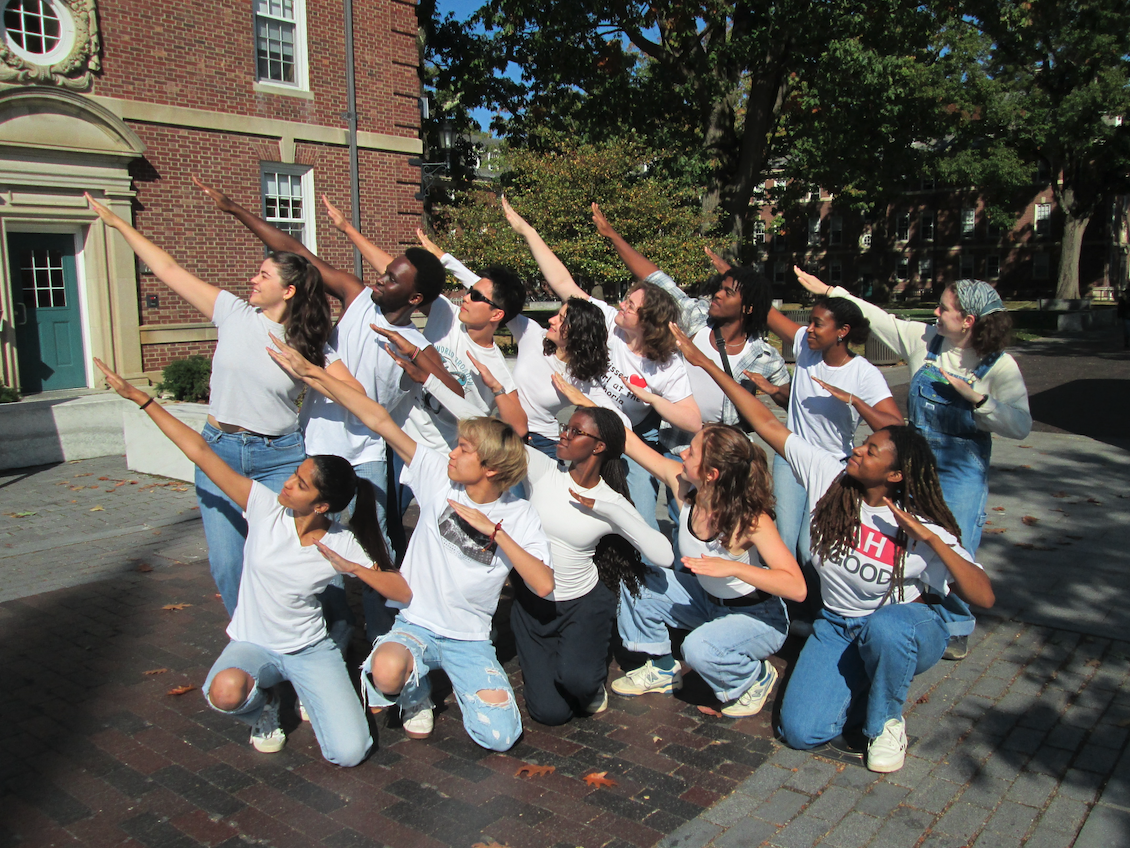After months of missing home and yearning for community at the College, I finally found a group of people during my second semester when I joined Sankofa, the College’s step team. Though being on the team is a huge commitment, if I could go back now, I would still join again in a heartbeat.
Sankofa was founded in 1996 by five Black women: Maxine Lyle ’00, Dahra Jackson ’00, Mya Fisher ’00, Melina Evans ’00, and Samantha Reed ’00. In 2006, Sankofa inaugurated The Steady Steppin’ Forward Step Competition, in which step teams from other colleges were invited to showcase their routines in front of a panel of experienced judges. Past members of the team have described the event as awe-inspiring, and some even cite it as the reason they decided to audition.
The competition was held annually until 2020, when it was canceled due to COVID-19 pandemic. Ever since the post-pandemic return to normal activities, our team has tried year after year to bring it back. Each year, however, the effort has been derailed at various stages. Last spring, for instance, the team was forced to cancel the event just three weeks before the competition was scheduled and after visiting teams had already confirmed their attendance. Each cancellation has had one glaring problem in common: a lack of funding.
The word Sankofa means “reach back and get it” in the Akan language of Ghana. This refers to our rich team history and how we return to and honor its past in order to move forward.
Our traditions play a tremendous role in our team culture. Even today, when alums who graduated over a decade ago return to visit, we ask them to share their Sankofa nickname — given to each member after they spend two semesters on the team — and the story behind it.
Steady Steppin’ Forward is another one of those important traditions. We are writing to shed light on the difficulties of funding a tradition that keeps step culture alive on campus — for ourselves, for future generations of students (especially Black students), and for the women who recognized a severe deficit in Black culture on campus nearly thirty years ago and founded the team to give students of color at a predominantly white institution the chance to participate in what is traditionally reserved for Historically Black Colleges and Universities.
Putting on an event of this scale requires several thousand dollars. We invite alums, including our founders and previous members of the team, to return and watch or judge the competition. In addition, there are costs associated with lodging for visiting teams and invited alums, food, and prizes. Due to our somewhat hefty budget requests, we have reached out to many campus partners: the dance and other academic departments, Facilitators for Allocating Student Taxes (FAST), the Minority Coalition (MinCo), the Davis Center, and the alumni office. We appreciate all of the time representatives have put into meeting with us and learning about our project. Yet the initial enthusiasm with which our ideas were heard was often followed by ambiguous offers of help, declined or delayed meetings, or even apologetic but outright rejections of funding.
Developing and maintaining events that contribute to institutional memory, particularly when it involves the hard-won struggles of students of color, cannot be a concentrated effort by those students, and student groups. It must be a community effort, involving partnerships with departments across campus. So far, we have not received the support we had hoped for.
Though Sankofa was built by and for Black students, it has never closed itself off to people of other identities. I myself am South Asian American and feel exceptionally included in Sankofa as a person of color in a way that sometimes isn’t true of other campus spaces.
As a school that has committed itself to institutional memory, supporting multicultural efforts and combating racial marginalization, the College must do a better job of throwing its weight behind events that uplift these exact ideals. Even with the work of our fantastic coordinator, Ian Dominic ’27, who has taken on much of the competition’s planning this year, we have struggled to find funding. We understand that money is limited and shared across student groups on campus. However, we also believe that funding for events that are meaningful to students of color — including the step competition — should be expanded so that they do not have to be pitted against one other. And if this funding is truly not available, campus partners such as the dance department and FAST should provide guidance on how to plan and scale down our ideas to fit our budget necessities rather than encouraging us to think big, then failing to fund our big ideas.
We are calling on donors, those who allocate money within the College’s administration, and departments across campus, to provide financial support to Steady Steppin’ Forward, and thus invest in part of Sankofa’s legacy. And we encourage members of the College community to take an active role in developing, planning, and supporting events and activities that benefit students of color and those with marginalized identities. We know that it takes time, effort, and energy, but we believe events like these are worth it all in the ways that they enrich our community. Sankofa doesn’t just belong to its members — as a member of the College’s community, Sankofa is your campus step team, too.
Aashi Mittal ’26 is a chemistry and women’s, gender, and sexuality studies major from San Diego, Calif.
Laura Alleman Chamon ’25 and Maymouna Bah ’25, members of the Sankofa Nuclear Board, cosigned this op-ed.





